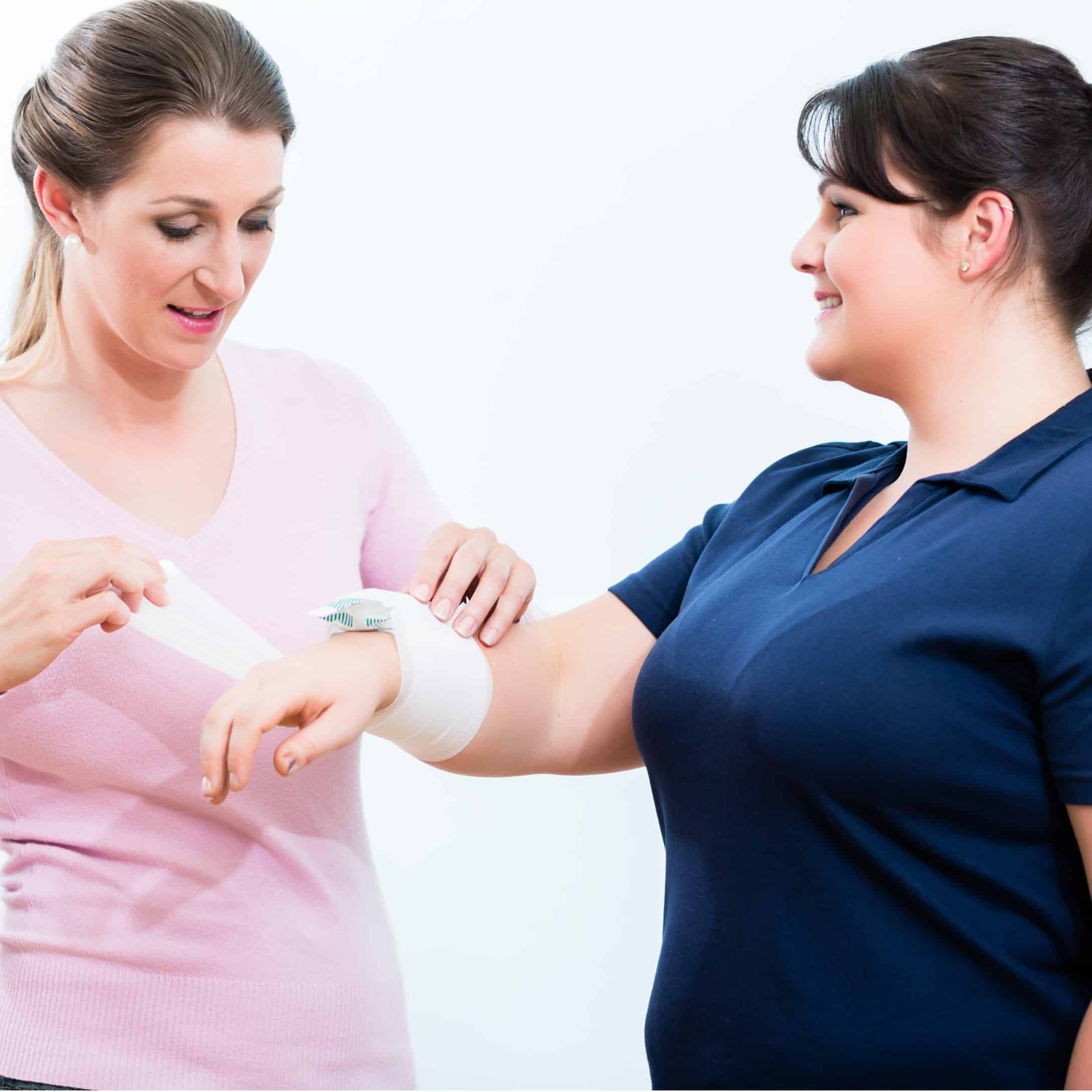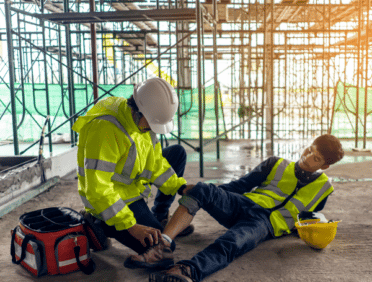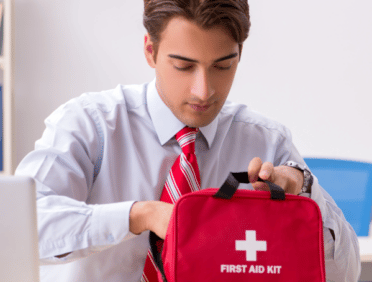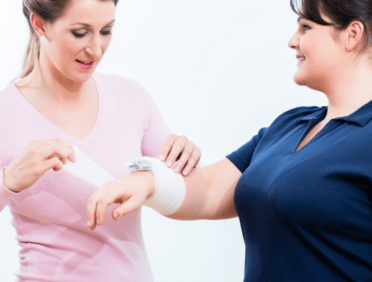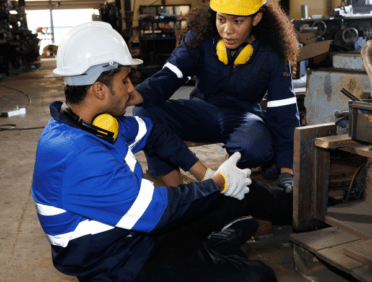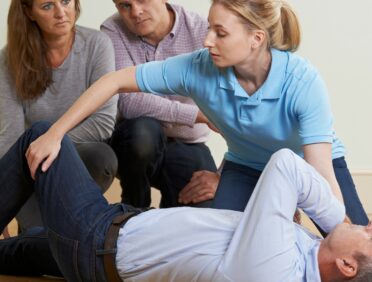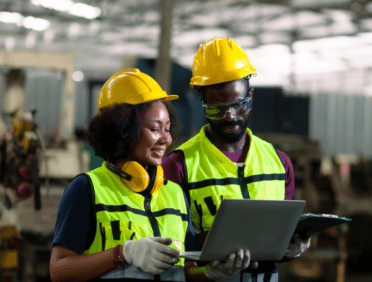Understanding the role and responsibilities of a first aider, for those working with young children or towards an early years educator qualification and certification.
What Is a First Aider?
Accidents can and do happen, even when we try to plan for every eventuality, there is always a chance that we end up faced with an accident or an injury. This is particularly true when it comes to working with children.
Children are not only less aware of their surroundings (and how to keep themselves safe in them) but there is always a chance that they can be clumsy too. There are also a variety of hazards around them whilst they learn and play, which can, if not used in the right way, lead to a first aid incident.
A first aider is someone who is trained to help, in this case, a child, with an injury or incident that could be seen as an emergency. They will have received training that is suitable for who they work or deal with and will allow them to take on a variety of tasks to keep those people safe and to minimise the risk of harm from any incidents that occur.
What Is the Importance of First Aid?
First aid is important because it offers real-time, right there and then support in a medical emergency or incident. In certain instances, first aid can be a deciding factor in whether or not someone lives or dies.
However, in smaller incidents, first aid, delivered at the right time, can help to stop the injury or incident from getting worse. This not only makes for a much better prognosis for the patient but also reduces the burden on healthcare too.
Role and responsibilities of the first aider
There are a variety of roles and responsibilities that come with being a first aider. These will vary from person to person, role to role and of course, incident to incident. However, there are some key aspects of becoming a first aider that you should be prepared to have to do on a regular basis.
Assess the casualty and give first aid treatment
One of the first things that you need to do as a first aider is to assess the casualty. You need to check what has happened, whether they are conscious and what injuries they may have. You will need to be able to make a decision quickly, usually under what feels like considerable pressure.
Comfort and reassure
When children become injured or are involved in a first aid incident, they are likely to become upset and want some reassurance from a trusted adult. This forms a key part of first aid, particularly with children.
A first aider will comfort children and reassure them that all is going to be okay and that they will soon feel better.
Communication and casualty care
Communication is a key part of being a first aider, you need to be able to effectively communicate with your casualties and those around them also. When you are a first aider you will also need to be able to communicate with any emergency services, should you need them and when your first aid concerns children, you are likely to need to speak to the parents of the child too.
You also need to give care to the casualty and ensure that they are well looked after during the entire situation.
Managing an emergency
It is one thing to manage a casualty, but you also need to manage the emergency too. You need to be able to feel comfortable to ensure that those around you don’t make the situation any worse than it already is and that the emergency doesn’t get any worse.
Managing a situation
As well as managing the emergency, you also need to manage the situation. Anything that could cause further harm, or make the situation any worse, needs to be taken care of. Your main concern is always on the casualty, but, you also don’t want to bring any other casualties into the situation.
Preserve life
The main aim of first aid is to make sure that you preserve life as best that you can. You want to ensure that the casualty is safe and that they are going to have the best chance of surviving with minimal long-term impact.
Prevent deterioration
Whilst deterioration can happen when someone is unwell or they have had an injury, it is your main aim, as a first aider, to make sure that the chances of this happening are limited. You want to make sure that they get better, all with your help and emergency first aid treatment.
Promote recovery
Another key part of first aid is to make sure that the casualty is given the best chance possible of recovering from whatever has happened to them. You can do this by ensuring that they are given the right first aid treatment and that you take steps to effectively manage not only their well-being but also the situation around them.
Safety
Safety is important when you are carrying out first aid treatment. Not only the safety of the casualty but also your safety too. You want to help them, this is your role as a first aider, but, if you end up getting hurt yourself, then you are not going to be able to offer them the help that they need and the situation could even get worse.
Scene
The scene that you are in is another key part of being a first aider. This can have an impact on your safety and the safety of those around you too. You need to check the entire scene, asses what the possible risks are and ask those around you to help to minimise this and allow you to support the casualty.
Situation
Whilst you should always be focused on the casualty, you do want to try and control the situation too. You don’t want this to escalate as you may end up having to try and fix this too, which will take you away from the casualty.
When it comes to first aid, anyone working with young children or towards an early years educator qualification will need to ensure that they have the training course certification. This is because they are going to come into contact with the children and be there to help them should a situation arise.
Here are some of the key roles that should be first aid trained when it comes to working with or being around children.
After school clubs
Many children attend a variety of after-school clubs, these vary in their nature and whilst many of them will not contain any risk to the children, there are those that can cause an injury or an emergency to arise.
Carers of children at home
It isn’t just those that work with children that benefit from first aid training, those who care for them in the home environment will also be able to offer help to a child in an emergency if they have first aid training.
Childminders
Childminders work with children of all ages, which means that they can get into all kinds of first-aid situations that they need help with. These are within their own home, which means that the childminders can do what they can to minimise the risk posed to them.
Day nurseries workers
Whilst it doesn’t matter the age of the child when it comes to a possible incident, it has to be said that the younger the child, the more likely it is that an incident can occur. This means that those in a day nursery should have first aid (and be ready to use it).
Early years age group
Much like day nurseries, those who work in early years are likely to need to use first aid on a regular basis and therefore should be able to identify what to do should a situation arise.
Foster carers
Foster carers have children in their homes and in their care. Having first aid qualifications can help them to feel comfortable with the care and assistance that they are going to be able to give the children that they care for.
Nannies and au-pairs
Nannies and au pairs are trusted with the care of other people’s children, therefore they should be able to support in a first aid incident when they occur.
Parents
It is great for parents to be able to help their children should an emergency situation arise in their home. Not only because it will help to protect their children from harm, but also because it will give them peace of mind too.
Pre-schools
Like many of the other places on our list, having first aid training in a pre-school setting will help to ensure that any of the youngest children in the education system, can be helped should an emergency arise.
Private nursery schools
Just like public nursery schools, those who work in private schools should also receive first aid training. This is particularly true if there is any boarding school set up in the school too.
School administration
Whilst school administration staff will not have contact with children as often as those that work directly with them, there is still a good chance that they will need to be able to offer assistance, support and help should an emergency situation arise.
Sports coaches
Sports can be a risk factor when it comes to injuries and emergencies in children. Therefore, those who are responsible for teaching children sports and helping them to improve their physical fitness should have an awareness of first aid.
Teachers and classroom assistants
Teachers and classroom assistants should be first aid trained because they are with children all day, every day. They will come across a variety of situations and injuries and should be able to deal with them comfortably and in a way that will ensure that the children in the class are given the best recovery chances.
Teaching support staff
Just like teachers and classroom assistants, and teaching support staff need to have first aid training to ensure that any children in their care are going to be able to receive the right level of first aid for the situation that they find themselves in.
To download a .pdf of this blog, please click here
